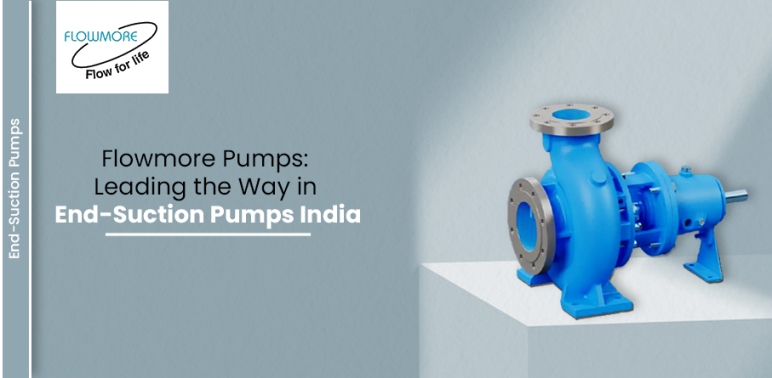Vertical Turbine pumps are used in a wide range of applications, such as water processing in industries, cooling towers in power plants, pumping water to fields for irrigation uses, and more. However, very few people are aware of these pumps’ amazing features and functionality. As one of the leading vertical sump manufacturers in India, Flowmore is here to guide you through the working principle of these pumps and how to select the right vertical pumps that best suit your application requirements.
What is a vertical turbine pump?
A Vertical turbine Pump is a subcategory of centrifugal pumps. These pumps are made especially to move water out of underground wells and deep reservoirs. They go by the names sump pumps, deep well turbopumps, and shaft turbopumps as well. The term “vertical turbine pumps” refers to the fact that these pumps are attached to the ground-level motor by an extended vertical shaft. Brings water or other fluid from deep underground reserves down to the surface. Vertical turbine pumps have a long history of use and are found in many different industrial settings. These pumps are a great option for a variety of industrial needs due to their effectiveness and simplicity of maintenance. The chemical processing, petrochemical, power generating, mining, oil and gas exploration, and seawater desalination sectors are the principal users of these pumps.
How do vertical turbine pumps work? The principle of operation
The movement of vertical turbine pumps causes gas molecules to clash with moving solid surfaces in a specified direction. The fast-rotating fan of these pumps strikes the gas molecules and forces them out the other end. Within the pump chamber, this motion creates a condition akin to a vacuum. Most Vertical turbine Pumps India have multiple stages. Every stage contains two blades: a stator blade and a high-speed rotating rotor blade. A gas molecule strikes the rotor blade as it enters the pump intake. The gas molecule receives kinetic energy from the blade’s mechanical movement. The gas molecule travels in the direction of the exit after striking the rotor’s surface once more.
Structure of vertical turbine pumps
According to Vertical turbine Pumps Manufacturers, vertical turbine pumps are designed with open and closed impellers. The transferred liquid lubricates the bearings in the diffuser bowl. At the top of the pump, a high-thrust motor is mounted, and a spindle bearing is located at the bottom for product lubrication. Diesel engines or AC motors are commonly used to operate vertical turbine pumps. A revolving impeller connected to the shaft is located at the end of the pump. The housing, referred to as the bowl, receives the pumped water. Multiple impellers installed on one shaft are seen in multistage vertical turbine pumps. The increased pressure generated by a multistage pump makes it easier for water to move from deep under the soil to the surface.
Precautions to be taken during the operation of vertical turbine pumps
Like any other pump, it is highly recommended that you follow the Vertical turbine Pumps Manufacturers India instructions for the best results. For pump operating instructions, get in touch with the best vertical sump pump providers in India. Make sure that the pump runs within the ideal and permitted operating parameters specified by the pump manufacturer.
Here are some precautions to take, explained by Flowmore, before operating the pump:
- Make careful to check the drive power and speed before installing the pump. These numbers are displayed on the pump nameplate along with the pump serial number.
- To avoid interference, make sure the oil pan is deep enough to correspond with the pump’s length.
- Prior to installing the pump, clean the pipes.
- Verify that any loose items are firmly fastened. Adjust the torque of seals and bearings.
- Be careful to adhere to the installation guidelines provided by the pump manufacturer.



